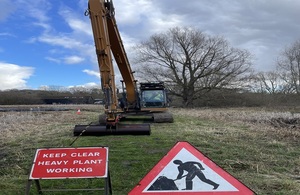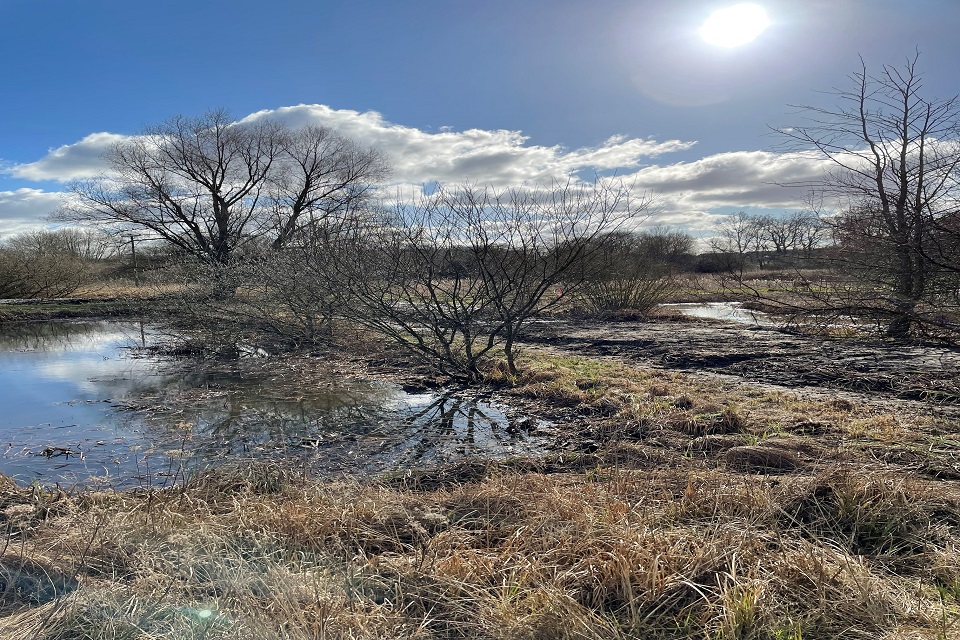Ecology benefits from restoration project in Norwich
Work has been completed at Costessey Fish Farm which will benefit the nationally scarce Marsh Carpet moth and the endangered Black Poplar tree.

A digger in front of a sign which says 'keep clear heavy plant work'
With the advice of the Butterfly conservation trust, the Environment Agency undertook vegetation management at Costessey Fish Farm. This work encourages the growth of meadow rue, which is the food plant of the Marsh Carpet moth.
Costessey, located between the River Wensum and the River Tud, is one of the few sites in the country where more than one moth of this species has been found. It is hoped that careful management will encourage numbers at the site to increase.
Pond restoration was also part of the project and included the removal of some accumulated silt and vegetation in two of the largest ponds on site. This will increase the amount of open still water for invertebrates such as dragonflies and damselflies which need open water to hunt and breed. There are 16 ponds on site which are home to otter, water vole, bats, and numerous invertebrate species.

The ponds.
Another important aspect of the work was to create a small black poplar nursery using propagated cuttings taken from known Black Poplar trees across the county. These young trees will eventually act as a source of future cuttings for riparian tree planting schemes. Black Poplar are Britain’s most endangered tree species, for this reason the Environment Agency uses them for their riparian planting schemes.
Kate Warwick, a technical specialist for the Environment Agency said:
It is great to have made so many positive changes to this Environment Agency owned site. The benefits for ecology were at the heart of everything we did, and we are excited to see the difference this restoration makes to species numbers.